Most of you have likely tucked your classic cars away until next spring. Since having vehicles sit for months can cause issues for both you and your cars, it never hurts to review a few basic facts about storing classic cars for the winter.
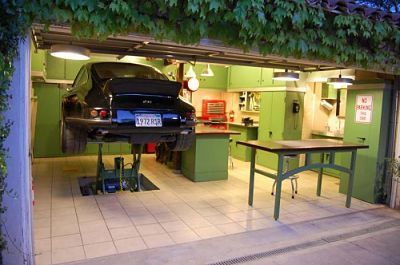 (www.gearhead.org)
(www.gearhead.org)
Protect Your Investment
Rick Drewry, collector car specialist with our underwriting partner American Modern Insurance Group, shares some recommendations on preparing a classic car for the cold months. “As a fellow classic car owner, the main goal is to protect our investment. It is less work to maintain a car than to fix it and it’s cheaper.”
Keep Your Car Dry
According to Rick, moisture is a big culprit of car storage issues. Unheated garages warm and cool with outside temperatures, causing condensation to build up on the interior and engine of your car. Condensation will corrode car parts, which can result in costly repairs. Install a garage dehumidifier to help control moisture and keep a fan running to circulate air.
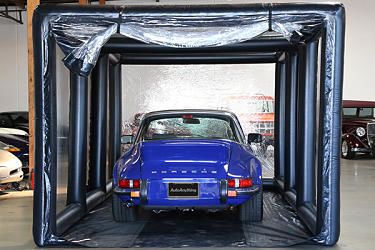
 (www.autoanything.com)
(www.autoanything.com)
Car Covers a “Must Have”
Using a car cover in a garage isn’t just for keeping dust and debris off. Breathable covers allow moisture to evaporate, giving an extra layer of protection for your car. While plastic encapsulating car covers protect a car from scratches and dirt, they can trap moisture, Rick says. Make sure the fan/vent system on them is working properly before leaving your car inside.
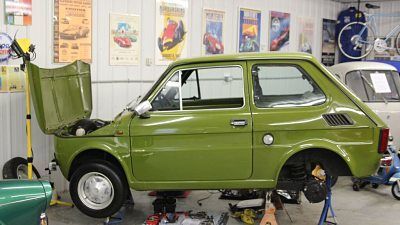
Add Fuel Stabilizer to Gas Tank
Before storing your car, change the oil, add fuel stabilizer to the gas tank and run the engine long enough to let the fresh lubricants work their way through the system. Check your tire pressure. Improperly inflated tires can develop flat spots from sitting too long. Better yet, raise your car on lifts, which will take the pressure off your tires.
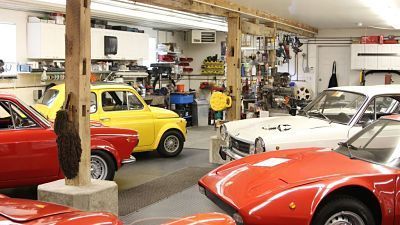
A Good Antifreeze Prevents Expensive Repairs
Rather than simply topping off your radiator, replace the antifreeze entirely. Use a good quality product to assure it will not freeze and crack the engine block, cylinder heads or radiator. Look for one rated to withstand temperatures dipping down into the single digits or below. You never know when your garage may lose power and heat.
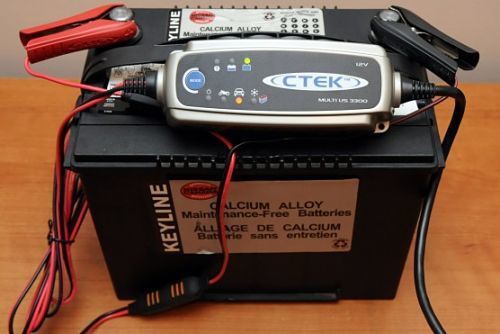 (www.wheels.ca)
(www.wheels.ca)
Keep On Charging
Good batteries are expensive. Keep your battery charged by purchasing a battery tender, which is a lot cheaper than buying a new battery each year. With the consistent charge of a battery tender, you are actually extending the life of the battery.
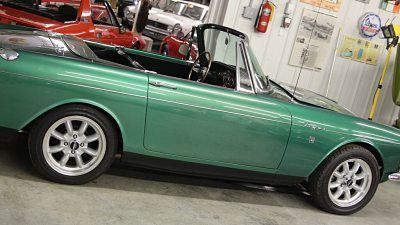
Don’t Store a Dirty Car!
Grime left on the paint can etch and stain it. Give your beauty a thorough cleaning (inside and out) and protect it with a good wax. Wipe both sides of the tires with WD-40 to keep them from drying out. Clean all the vinyl and leather, too. Rick says this is a no-brainer. “Come spring, your car will be road ready the instant it turns warm.”
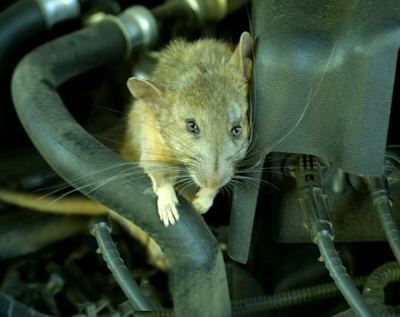 (Linda Gage/www.hubpages.com)
(Linda Gage/www.hubpages.com)
Check Under the Hood for Guests
Your car’s clean, winterized and protected in the garage. What could possibly go wrong? Well, a family of mice has set up their new home in the engine. These pests can literally eat their way through the wiring and interior, setting your restoration back months. Try these tips to battle animal infestation:
- Eliminate entry points and hiding places – Block all holes and cracks into the garage.
- Block entrances to engine compartment – Set traps near the wheels so rodents can’t crawl up the tires. Some owners have even put wire screen over engine openings.
- Use repellants or traps around the car – Spray repellant or set snap traps, glue boards, or capture cages on the floor around the car.
- Leave the hood up – Pests are looking for a warm dark place to hold up. If this isn’t practical, then set up a light to shine into the engine to give them fewer places to hide.
- Go high tech with ultrasound devices – Rodents are sensitive to the high frequency sounds they emit, although it’s anyone’s guess as to whether this scares them off or simply bores them.
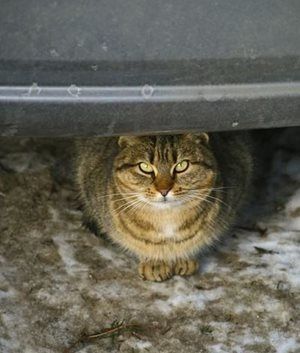 (www.pawnation.com)
(www.pawnation.com)Check for Friendly Fur-babies, Too
Whatever you do, look frequently for signs of nesting. Rodents will drag any number of things into their nests – dog food, pine cones, pine straw, newspapers, acorns. (Imagine your engine catching fire due to a stash of pine cones wedged in there!) Also, before testing the engine, tap loudly on the hood to give your would-be tenants a chance to scurry. Remember, the family pet may like to hide there, too.
 (Rido/www.Shutterstock.com)
(Rido/www.Shutterstock.com)
Show the Love – Prepare Your Car for Storage
You are passionate about your classic car, which is why you take the time to prepare it for long months of storage. Waiting to get back behind the wheel may be killing you, though. Don’t worry – you’ll be reunited soon. Winter doesn’t last forever.
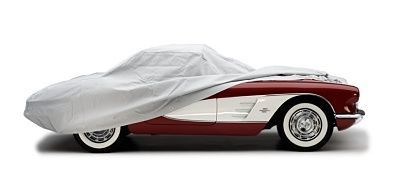 (www.coverquest.com)
(www.coverquest.com)
Collector and Classic Car Insurance for Less
Want to learn more about protecting your car during winter storage? Check out our past blog on the subject or this handy car storage checklist. Share it with your fellow car enthusiasts. Passion for cars is what we’re all about. Let the friendly staff at Classic Auto Insurance help you find the perfect policy to protect your classic all year long. Visit our website at www.classicins.com and see how we can help safeguard your dream car.





